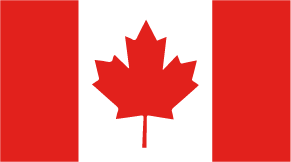November 21, 2014 | Industry Insights
U.S. Border Protection Offers Risk Assessment Template

U.S. Border Protection Offers Risk Assessment Template
To join the U.S. Customs-Trade Partnership Against Terrorism (C-TPAT) program and receive the benefits it provides in strengthening international supply chains and gaining specific corporate benefits—including reduced examination fees and access to Free and Secure Trade (FAST) lanes—applicants must be able to provide a documented process of how the company assesses risk. To facilitate that process, C-TPAT offers an overview of the elements of a good risk assessment in its August 2014 Five Step Risk Assessment for importers, brokers, consolidators, highway carriers, foreign manufacturers and U.S. exporters.
Since it’s vital to your financial security that you are not the weak link in the supply chain—especially because of your own failure to assess or combat risk—using C-TPAT’s five-step plan should be considered by all in the shipping industry. Even small companies should establish a risk mitigation process tailored to their niche. C-TPAT’s review is a good start.
Even if your supply sources are all deliberately selected because of their low risk of loss, you might be surprised what you would discover by doing an in-depth assessment of the full supply chain. A dependable manufacturer might shift to a foreign ground transportation provider to save on cost and, thereby, expose you to unknown risks of loss. Frequent trucker changes or use of truckers not certified by the Authorized Economic Operator program could introduce significant risk of loss—even if your supplier has historically not had delivery problems.
There are other aspects of your supply chain risk that, without deep consideration, could be missed, C-TPAT says. For example, the use of improperly treated wood material or evidence of pests in agricultural shipments can cause costly delays and lead to importer charges for demurrage, remedial actions or even immediate re-export of a shipment. And it’s not only agricultural commodities that are vulnerable. Noncompliant wood packaging material can be a costly problem in any sector, with supply chains involving metal, stone, food, finished wood products, machinery, electronics and plants having the highest risk of noncompliance.
A risk assessment can help you identify these and other underlying risks of loss and can bring to light insurance considerations you might previously have ignored or passed over as irrelevant. As part of your risk assessment process, involve your insurance broker. Roanoke Trade’s professionals are knowledgeable about not only insurance coverage but risk management as well. We work as members of your overall risk strategy team to provide probing questions and researched answers and can help keep you abreast of trends in loss as they evolve.
We invite you to learn more about us, our experienced talent in this highly specialized area, our creative solutions, and the value we will bring to you and your clients. Please contact us at 1-800-ROANOKE.
Source: C-TPAT, U.S. Customs & Border Protection





